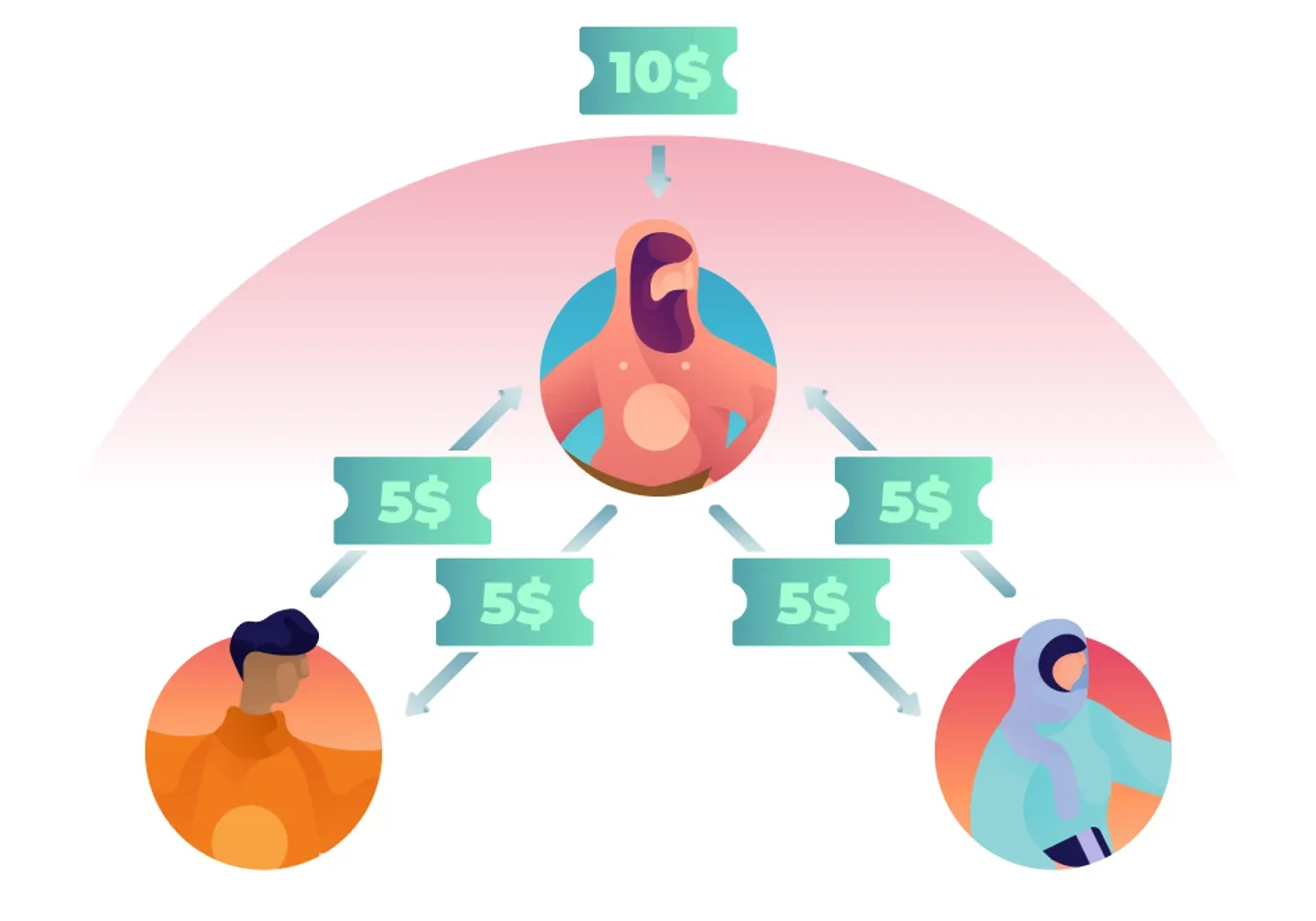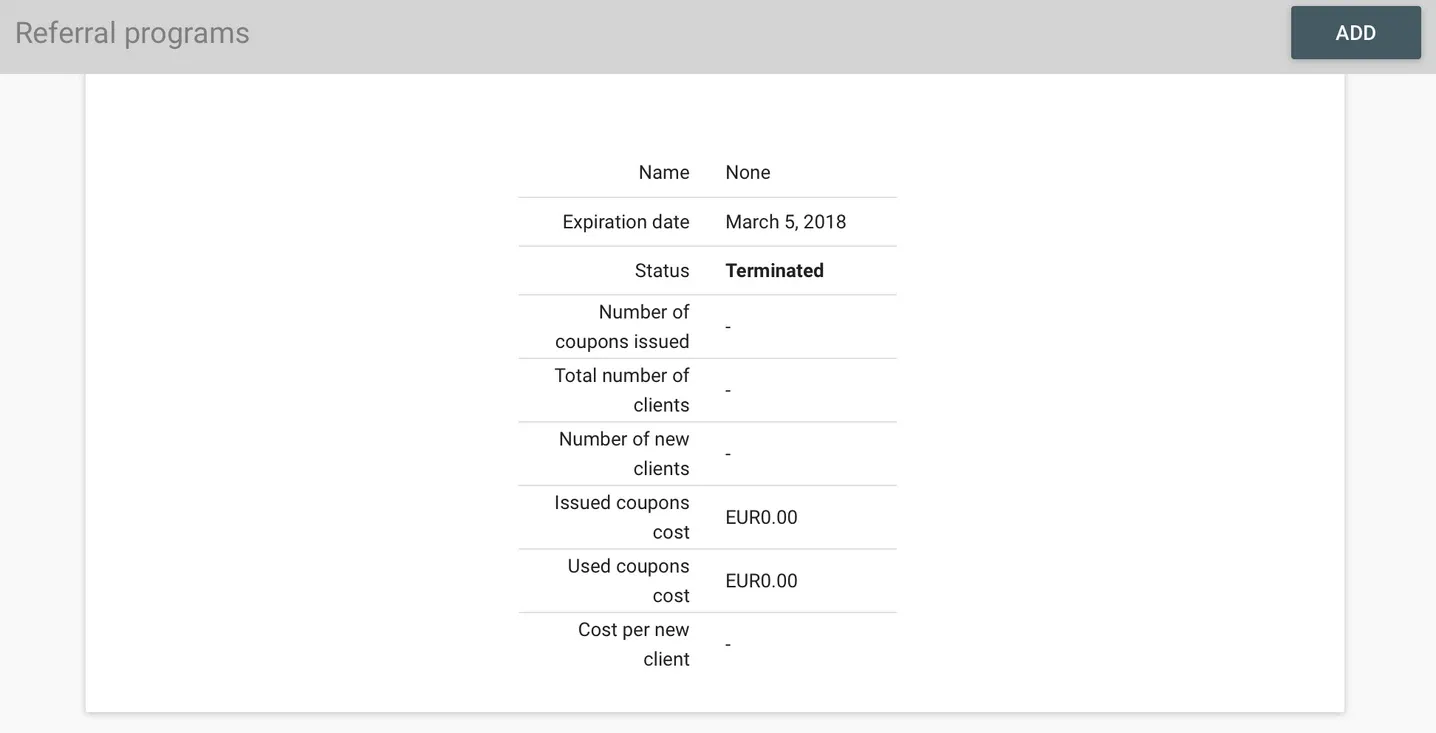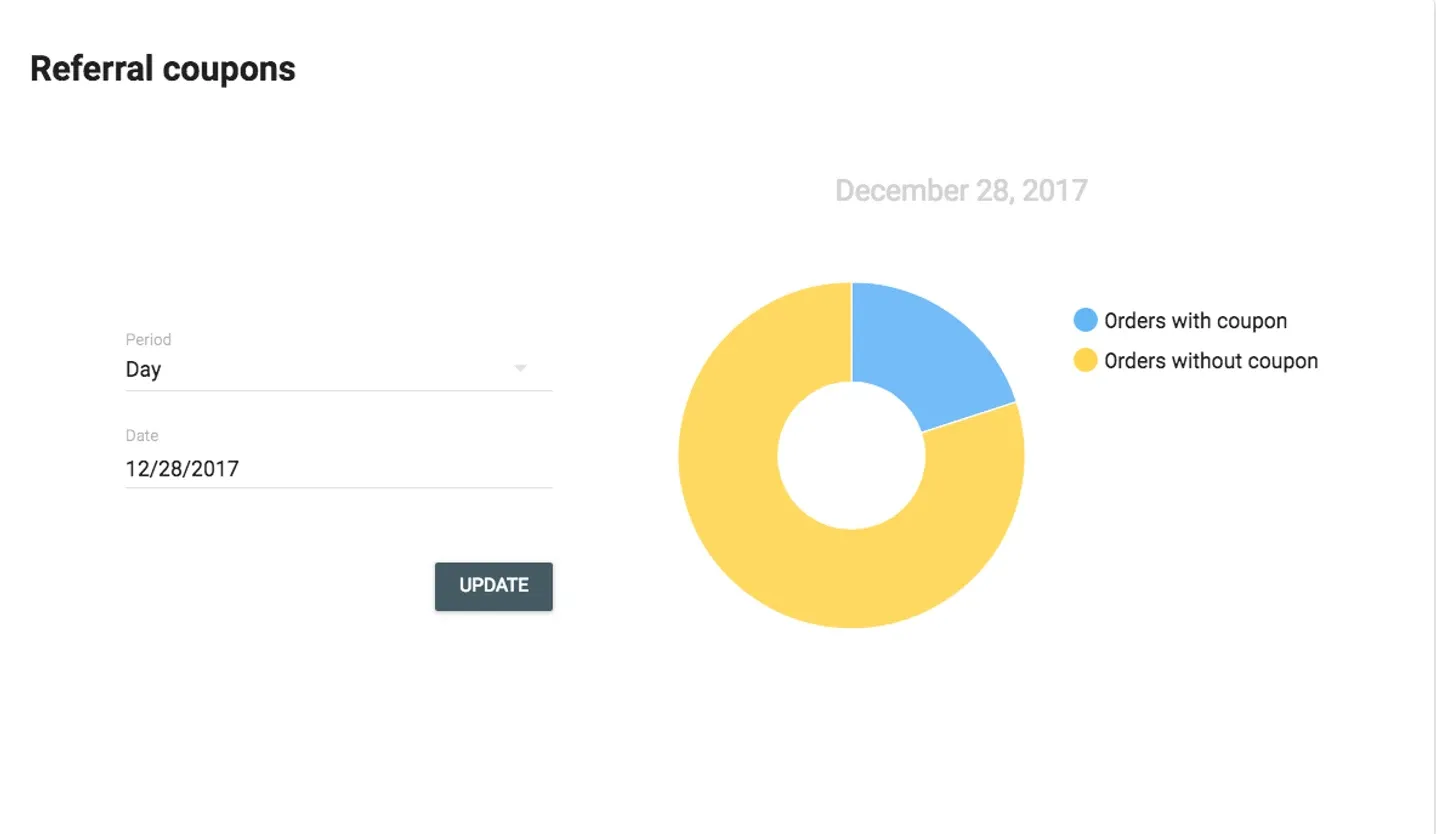Lesson 5.
Analyzing referral programs
You’ve probably already understood: launching a successful referral program for your taxi business requires calculating and analyzing its impact.
OnDe referral programs allow you to deal with analysis a lot quicker.
Budget liability
The following scheme will help us to sort out how your liability works within the frame of a referral program. Have a look:

If you grant Bob an initial coupon with a $10 value, and Bob invites two friends, both of whom actually use a coupon, your theoretical liability will be $30 (which is $10+$5+$5+$5+$5).
When you issue an initial coupon and give it to Bob, there’s no way to know whether he is going to use it. Neither we can know if his friends will use their coupons too. At that point, the liability stays theoretical — it is what the referral program budget accounts for.
The theoretical budget is only limited by your own estimation of the funds. This is the number you will have to figure out on your own. The theoretical budget of the campaign is normally 10 to 20 times bigger than the real amount of money you will pay your drivers for being a part of the referral campaign.
The virtual money of the budget will only turn into real liabilities when the coupons will be redeemed. Normally, about 25% of all issued coupons are being redeemed.
Here we go: a big plus of the referral programs comparing with other methods of promoting a taxi business is the deferred costs of it. You do not pay anything until the referral program brings its results. The real financial obligations are also to be fulfilled only after the actual new clients are already on your side. Compared to traditional promotional techniques, the financial advantages are obvious (and suiting young businesses especially).
Analyzing variables of a referral program

This picture above, you’ve seen it already in your My hub. Remember creating a sample referral program? Right, these are the statistics OnDe system counts automatically.
Let’s go through the variables together!
- Number of coupons issued. Here you’ve got a total number of coupons issued by that very moment. The returned coupons or invites left are not included in the count.
- Total number of clients. The field shows you the total number of users of this referral program, both your old good clients (those who refer) and new ones (those who get a referral).
- Number of new clients. This variable shows you the exact number of new users attracted by this referral program. This is an essential number to analyze how your business grows with the referral campaign.
- Issued coupons cost. This variable shows the total cost of all the coupons issued at the moment. Unlike budget, the “issued coupons cost” doesn’t include the cost of potential coupons.
- Used coupons cost. In other words, total value of all actually redeemed coupons. This bar shows your actual liability in front of your drivers at the moment.
- Cost per new customer. This value is simply the most important! It shows how much you do spend on every new user acquisition. Cost per new customer = (Used coupons cost) / (Number of new customers). This number is essential to analyze whether your referral campaign is effective as compared to other marketing tools you use.
As you see, our platform is gathering a lot of data for analyzing referral campaigns. Because you can create as many referrals as you wish, there’s also a possibility to compare the results of different programs and see what works best.
Analytics tab
You’ve the most definitely noticed the “Analytics” tab in your My hub. It is the place where all the statistics about your company are stored. And presented with very cute diagrams.
For the stats about the referral programs you’ve got to look for the one looking like a yellow doughnut:

This diagram shows how many of your orders were actually done with coupons (on daily, monthly, and yearly basis). You can use this information to see which channels of coupons distribution work best for you. You can compare your data from different periods, which enables you to conclude whether online or offline marketing gives you the most results.
To get an idea of how the inbuilt metrics help measuring the success of a campaign, let’s have a look at some good case.
Taxi 107 case
Taxi 107 launched a summer referral campaign on OnDe platform. Their aim was promoting the passenger app and online orders, and attracting new users.
Key features of the campaign were:
- Unlimited budget;
- Unlimited campaign time activity;
- 30 days expiration time of a coupon;
- Everyone getting an invitation being able to invite, too.
The results of the referral program were:
- New users acquisition — 450 people;
- One new client’s cost — $1;
- Coupons issued — 528;
- Coupons used — 274.
Basically, the company managed to attract 450 new clients for only $1 each. After the campaign was over, Taxi 107 was able to compare the costs of referral marketing to other marketing tools. And guess what? Referrals were cheaper and more effective.
Since the most important variable is the cost per new client, it’s nice to have an average new user can cost. For Android, the price per new client is between US$ 1 to US$ 2 (download/install).
For iOS, the prices are slightly higher: $3 to $5+ since the users usually transact more and bring more money to a company. The location of your taxi business will also influence the price per new client.
Famous marketers are generally very loving about referrals. As you already understand, setting up one and analyzing it is not quite enough for success to be guaranteed. Promoting your great referral is the key. But this is a theme for another lesson… See you there!
